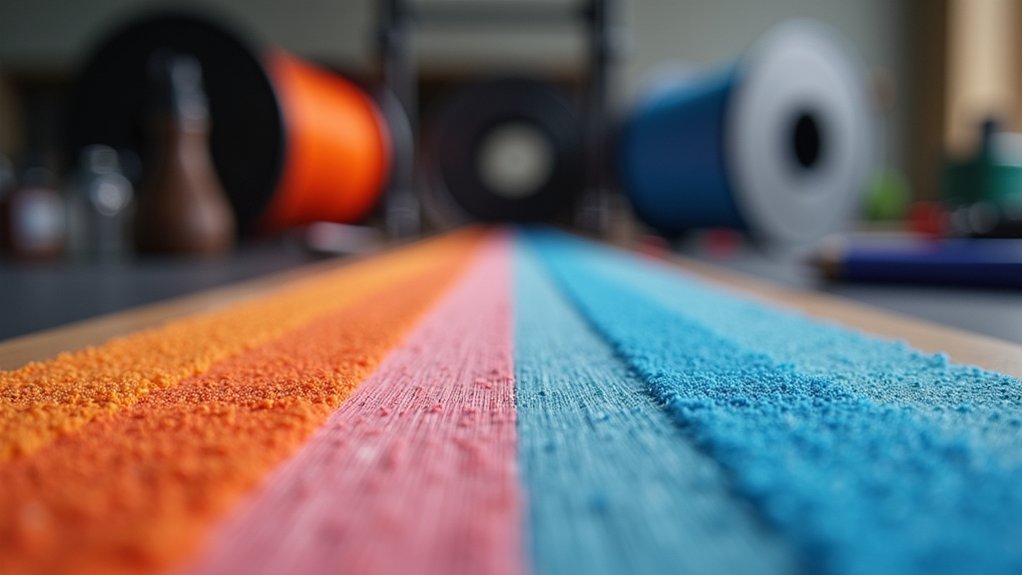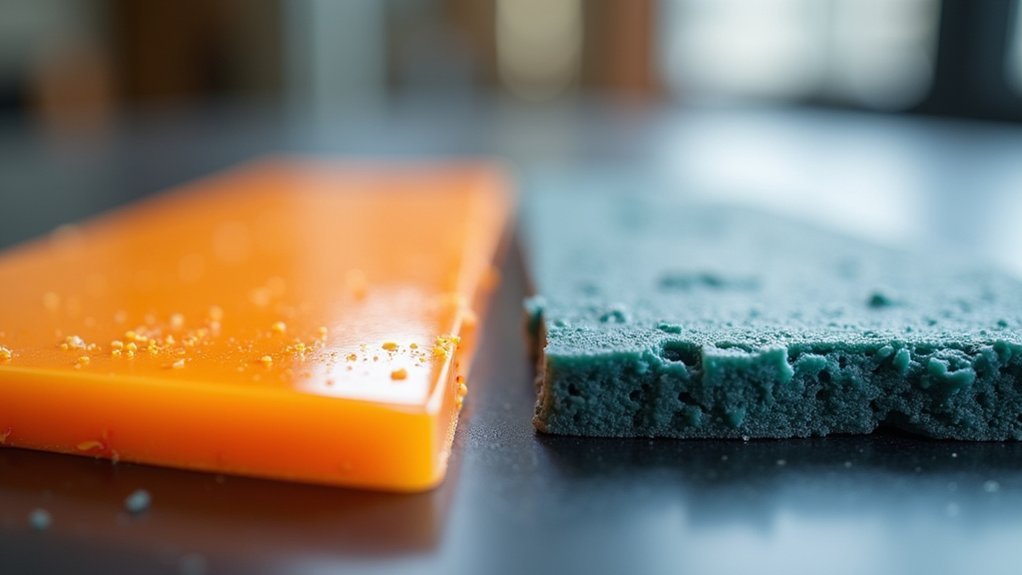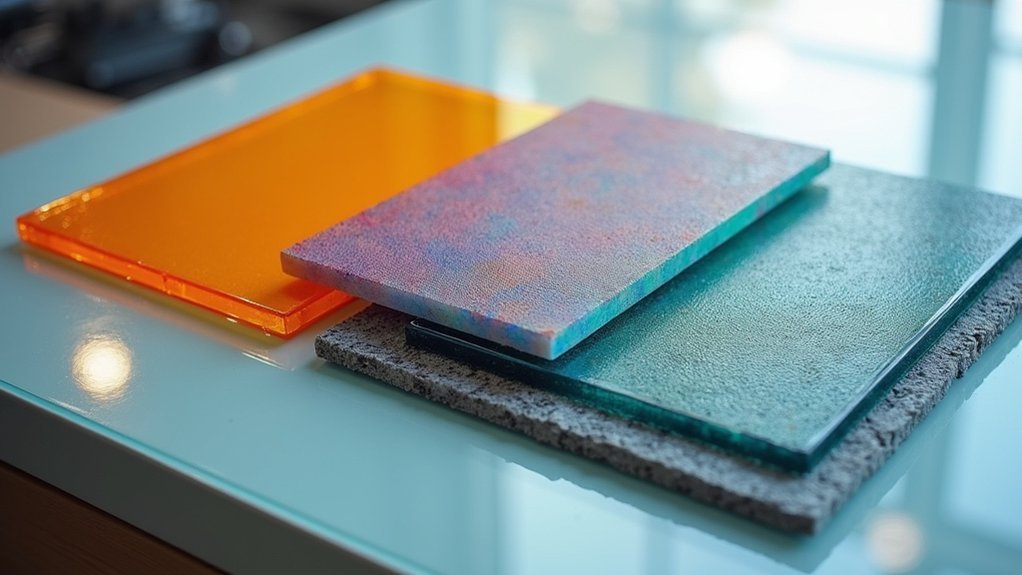Your three best build surface options are removable flexible plates with PEI coatings for easy print removal, permanent PEI sheets that provide excellent adhesion and durability, and glass surfaces for smooth finishes with PLA and PETG. Removable surfaces offer tool-free part removal and are ideal for high-volume printing, while permanent options like PEI and glass are more cost-effective long-term with superior heat distribution. Each option’s performance varies markedly based on your specific filament requirements and printing applications.
Removable Build Surface Solutions and Their Key Advantages

While traditional build surfaces require scraping tools and considerable effort to remove finished prints, removable build surfaces revolutionize the printing experience by offering a simple flex-and-pop removal method.
These flexible build plates feature PEI sheets or textured finishes that provide strong adhesion during printing, then release easily when you flex the surface. The magnetic build system guarantees your print bed remains stable throughout the process while allowing quick exchanges between prints.
You’ll find these surfaces often double-sided, accommodating different filament requirements cost-effectively.
Regular maintenance extends their lifespan greatly, making them ideal for high-volume printing environments. The tool-free part removal eliminates damage risks to both your prints and printer, streamlining your workflow notably.
Permanent Build Surface Materials and Performance Benefits
Three major permanent build surface materials dominate the 3D printing landscape: glass, aluminum, and PEI sheets.
Glass surfaces deliver consistent print quality with smooth finishes, perfect for PLA and PETG filaments. They’re easy to clean and maintain, requiring minimal upkeep between prints.
Aluminum plates offer lightweight construction with superior heat distribution, making them ideal for high-temperature filaments like ABS and nylon.
You’ll appreciate their even heating characteristics that prevent warping and adhesion issues.
PEI sheets provide strong adhesion properties during printing while releasing parts effortlessly when cooled.
You won’t need additional adhesives or sprays with these surfaces.
Permanent build surfaces prove more cost-effective than removable options over time.
You’ll replace them less frequently, saving money while maintaining reliable performance for consistent results.
Comparing Adhesion Methods Between Removable and Fixed Surfaces

When choosing between removable and fixed surfaces, you’ll find that each approach requires different adhesion strategies to secure your prints effectively. Removable surfaces like flexible build plates typically feature magnetic bases with specialized coatings such as PEI or textured finishes that provide excellent grip without additional adhesives. Fixed surfaces including glass or aluminum plates usually need adhesion aids like glue sticks or sprays, especially for challenging materials.
| Surface Type | Adhesion Method | Maintenance | Best For |
|---|---|---|---|
| Removable | Built-in coatings | Easy replacement | PLA, PETG |
| Fixed | External aids required | Resurfacing needed | Nylon, high-temp |
| Flexible plates | PEI/texture optimize grip | Simple cleaning | Most filament types |
| Glass/aluminum | Sprays/glue enhance hold | Wear concerns | Specific applications |
Your choice impacts long-term adhesion quality and replacement options considerably.
Frequently Asked Questions
What Is the Best Surface to Put a 3D Printer On?
You’ll want a sturdy, level table or workbench that’s 20-30 inches high. Avoid carpets or uneven surfaces since they’ll cause vibrations. Consider adding vibration-damping pads underneath for better stability.
What Is the Best Build Plate Adhesion Type for 3D Printing?
You’ll find textured PEI surfaces work best for most filaments like PLA and PETG. For ABS, you’ll want glass with adhesives, while aluminum plates handle high-temperature materials like Nylon effectively.
What Is the Best Surface to Print PLA On?
You’ll get best results with textured PEI plates since they provide excellent adhesion and easy removal. Glass surfaces work well too, offering smooth finishes, though you might need adhesive aids occasionally.
What Is the Best Type of 3D Print Bed?
You’ll find the best 3D print bed depends on your filament choice. PLA works excellently with smooth PEI surfaces, while ABS benefits from BuildTak or textured surfaces that reduce warping issues.





Leave a Reply